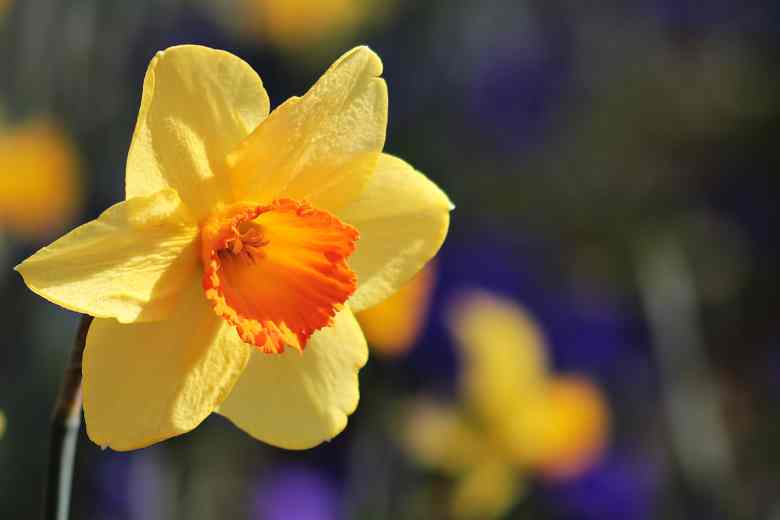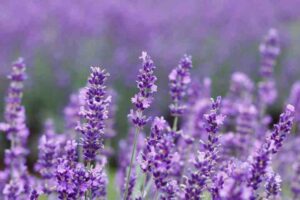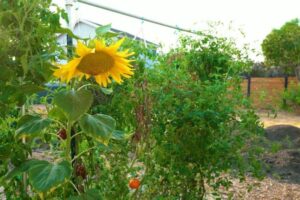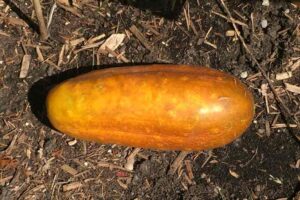
Daffodils are a popular spring flower that grow well in Tennessee. In order to ensure a successful bloom, it is important to plant bulbs at the right time.
The best time to plant daffodil bulbs in Tennessee is in the fall, from September to November. Planting at this time gives the bulbs an opportunity to establish a root system before the ground freezes. You should plant the bulbs about 6 to 8 weeks before the first frost. Plant the bulbs 3 to 4 inches deep in well-drained soil and water them well.
With proper care, you should enjoy a beautiful display of daffodils come spring.
The Best Time to Plant Daffodil Bulbs in Tennessee
Tennessee is the ideal place to plant a variety of flowers and bulbs, including daffodils! Planting daffodil bulbs in the fall enables them to take root and bloom in the spring. The best time to plant daffodil bulbs in Tennessee is usually between September and November, depending on the weather. Planting too early may cause the bulbs to rot, while planting too late may not give them enough time to take root.
Be sure to choose a sunny spot with well-drained soil and make sure to plant the bulbs at least six inches apart. With the right preparation and timing, you can look forward to vibrant, cheerful daffodils in the spring!
How to Prepare the Soil for Planting Daffodil Bulbs
Planting daffodil bulbs is an easy and rewarding process that can bring a burst of spring color to your landscape. Before planting, it is important to prepare the soil properly to ensure healthy plants and blooms.
To get started, remove any weeds or debris from the planting area. Next, loosen the soil to a depth of 8 to 10 inches and mix in a balanced fertilizer.
The soil should be moist but not soggy. If necessary, add compost or peat moss to improve drainage.
Finally, plant the bulbs four times as deep as they are wide and cover with soil. With a little preparation, you can enjoy beautiful daffodil blooms in the spring.
Selecting the Right Daffodil Bulbs for Tennessee Gardens
Having a beautiful garden in Tennessee can be easy if you select the right daffodil bulbs. Daffodils are a reliable and cheerful flower, blooming in early spring and lasting for weeks.
When selecting the right bulbs for your Tennessee garden, there are a few things to consider; the daffodil variety, climate and soil type. Choose varieties that are hardy in your area and can withstand Tennessee’s mild winters.
Also, consider soil type, as daffodils do best in well-drained soil. With the right selection of daffodil bulbs, you can have a stunning garden of cheerful blooms every spring.
Planting Daffodil Bulbs in Tennessee
The blooming of daffodil bulbs in Tennessee brings a vibrant burst of color to the landscape every spring. For gardeners in the Volunteer State, planting daffodil bulbs is an easy and rewarding way to increase the beauty and cheerfulness of their outdoor spaces.
Planting your daffodil bulbs in the fall ensures they have plenty of time to establish themselves before the cold winter months arrive, allowing them to flower in the spring. With the right climate and soil conditions, you can enjoy the bright yellow blooms of these hardy bulbs for years to come.
Let Tennessee’s daffodils bring you joy in the spring by planting your bulbs now!

Caring for Daffodil Bulbs in Tennessee
Daffodils are a classic symbol of spring, and Tennessee gardens are lucky to be able to enjoy their beauty every year. Caring for daffodil bulbs in the state of Tennessee is easy, but requires some knowledge of the best practices.
The most important step is to prepare the soil before planting your bulbs. To ensure optimal growth, you should mix in nutrient-rich compost and organic matter.
Additionally, daffodil bulbs prefer soil that is slightly acidic, with a pH level of 6.5. When planting, be sure to space the bulbs at least three inches apart and bury them at least six inches deep.
Finally, ensure that the bulbs get regular water and plenty of sunlight.
With just a bit of knowledge and care, you can enjoy a beautiful display of daffodils in your Tennessee garden each year!
Common Pests and Diseases of Daffodils in Tennessee
Tennessee is known for its beautiful daffodils blooming in springtime, but unfortunately, these gorgeous flowers can be affected by common pests and diseases.
Knowing what to look out for and how to treat affected plants is essential for keeping these cheerful blooms healthy and vibrant. Common pests of daffodils in Tennessee include aphids, slugs, and earwigs, while the most common diseases in the area are basal rot, crown rot, and leaf scorch.
With the right preventative measures and timely treatment, you can keep your daffodils looking their best and bring cheer to your garden year after year.
Tips for Growing Successful Daffodils in Tennessee
Daffodils are a delightful and iconic spring flower, and Tennessee is an ideal place in which to grow them. If you want to grow daffodils in Tennessee, there are a few tips to help ensure success. Plant in a sunny spot with well-draining soil, and water regularly.
Make sure to give the daffodils plenty of space to grow by planting them 6-12 inches apart. Fertilize in early spring with a balanced fertilizer.
Finally, to ensure more blooms, remove the spent flowers and divide the clumps of bulbs when they become overcrowded. With these tips, you’ll be sure to enjoy a vibrant crop of daffodils in the spring.
Troubleshooting Problems with Daffodil Bulbs in Tennessee
Daffodils are a popular spring-blooming bulb and are generally quite hardy. However, several problems can plague daffodil bulbs, particularly in a region like Tennessee with its specific climate and soil conditions. Let’s explore some common issues that daffodil growers in Tennessee might face and how to troubleshoot them:
-
Poor Flowering or No Blooms:
- Planting Depth: Daffodils need to be planted at the right depth. They should be planted 3 times as deep as the bulb is tall.
- Overcrowding: If daffodils are planted too closely, or if they have been in the ground for several years and multiplied, they may become overcrowded. Divide and replant the bulbs in the fall.
- Insufficient Sunlight: Daffodils need at least 6 hours of direct sunlight daily. Plant them in a location that provides ample sunlight during the spring.
- Depleted Soil: If the soil lacks essential nutrients, this can affect flowering. Add a balanced, slow-release fertilizer when planting.
-
Rotting Bulbs:
- Poor Drainage: Daffodils dislike wet feet. Ensure the soil drains well to prevent bulbs from rotting. If your soil retains water, consider planting daffodils in raised beds or amending the soil with compost or sand.
- Diseases: Basal rot and other fungal diseases can affect daffodil bulbs. To prevent these, plant only healthy bulbs and consider rotating your planting location.
-
Pests:
- Nematodes: These microscopic worms can damage daffodil bulbs. Avoid planting daffodils in the same location every year and make sure to purchase nematode-free bulbs.
- Bulb Flies: The larvae of these flies burrow into daffodil bulbs. Check the bulbs for any signs of infestation before planting and discard any affected ones.
-
Foliage Problems:
- Yellow or Streaked Leaves: This could be a sign of a virus. If you suspect your daffodils are infected, it’s best to remove and dispose of them to prevent the spread to other plants.
- Cutting Back Too Early: After blooming, it’s important to let daffodil leaves remain until they yellow naturally. This allows the plant to store energy for next year’s bloom. If you cut them back too soon, it can weaken the bulb.
-
Environmental Concerns:
- Late Frosts: Tennessee can occasionally have a late frost that damages emerging daffodil shoots. While you can’t control the weather, you can provide some protection with a layer of mulch or by covering the plants temporarily with a frost cloth.
- Heat: Excessive heat in late spring and early summer can impact the next season’s bloom. Mulching can help keep the soil cool and retain moisture.
By addressing these potential problems and providing the appropriate care, you can ensure your daffodils thrive in Tennessee. If problems persist, it can be helpful to reach out to local agricultural extension services or gardening clubs for specific regional advice.
FAQs About the when to plant daffodil bulbs in tennessee
What is the best time to plant daffodil bulbs in Tennessee?
Answer: The ideal time to plant daffodil bulbs in Tennessee is during the autumn months, from late September to mid-November.
How deep should I plant my daffodil bulbs in Tennessee?
Answer: When planting daffodil bulbs in Tennessee, make sure to plant them at a depth of about 8-10 inches.
Can I still plant daffodil bulbs in Tennessee in the spring?
Answer: Yes, you can still plant daffodil bulbs in Tennessee in the spring, although this will require more frequent watering and is not recommended.
Conclusion
In Tennessee, daffodil bulbs should be planted in the fall, typically between September and November. Planting in the fall ensures that the bulbs will have enough time to develop a healthy root system before the cold winter temperatures arrive. To ensure success, make sure to plant the bulbs in well-drained soil in a sunny spot and water them regularly throughout the growing season. With a bit of patience, your garden will be filled with beautiful daffodils come spring time.







